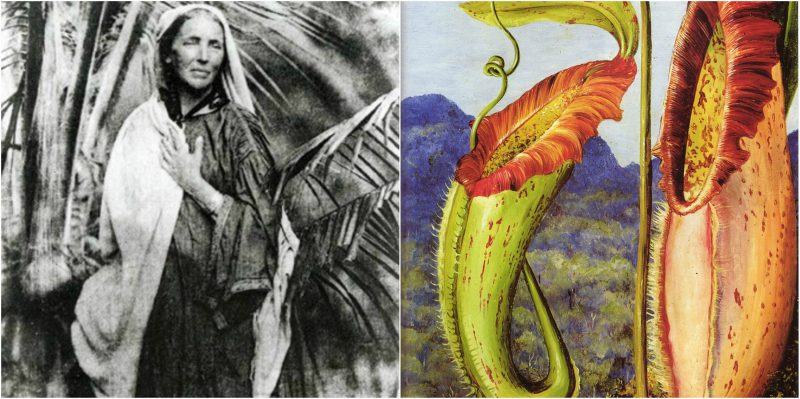Marianne North (born on 24th October 1830) was the oldest daughter of a prominent land-owning family from Hasting. Her father, Frederick North, was a Liberal M.P. for Hastings.
In her youth, she studied and practiced as a vocalist under the famous English singing teacher and composer Charlotte Helen Sainton-Dolby, but her strivings were always leaned towards the natural world. Soon after her voice failed, Marianne focused herself on painting flowers, a practice that will ultimately reward her with a permanent exhibition at the Royal Botanic Gardens, Kew.
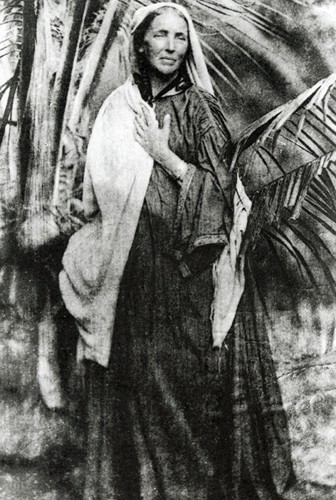
After her mother’s death in 1855, Marianne started to accompany her father on his journeys as a member of the parliament for Hastings. From 1865 to 1867 she traveled in Syria and along the Nile. These were also the years when she received her first formal lessons in oil painting. Marianne described this experience as “a vice like dram-drinking, almost impossible to leave off once it gets possession of one”.
She and her father shared the passion for botany, so their journeys were always interesting. After he died in 1869, she decided to follow her dream. She wanted to become a biologist and botanical artist, exploring the flora of countries around the world.
Marianne was now independent and wealthy, eager to explore and experience the nature of the Earth. After her father’s death, Marianne went to Sicily where she painted for a while, perfecting her skills and preparing herself for more.
Marianne North’s first bigger adventure began with a two-year trip around Canada and the United States. She arrived in Boston in 1871 and was immediately overwhelmed by the variety of new plants she encountered. Although she had a lot of material to work on, it wasn’t until she reached Jamaica that she started painting regularly and defined her style and profession.
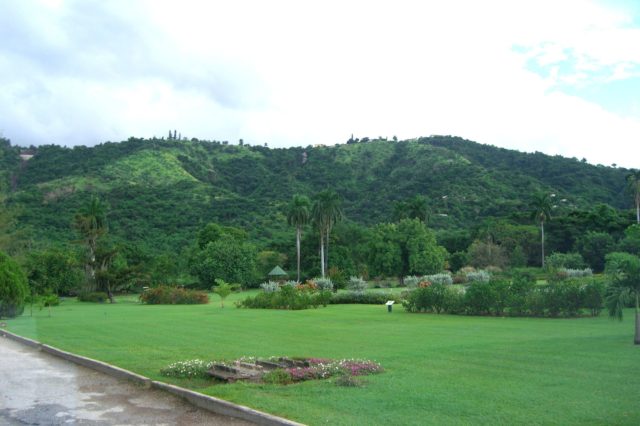
Although her family name offered her the best working conditions and provided direct communication with ambassadors, governors, and ministers, North preferred to travel alone and find her own way around the places she visited.
Marianne was never a fan of social conventions like formal dinners and fancy dress parties, and she didn’t believe in marriage. She preferred to be alone with her paper and oils, out in the wilderness.
In Jamaica, she rented an old house in the abandoned botanical gardens where she painted day and night, never getting enough of the bananas, palms, orchids, passion flowers and other different exotic plants that surrounded her.
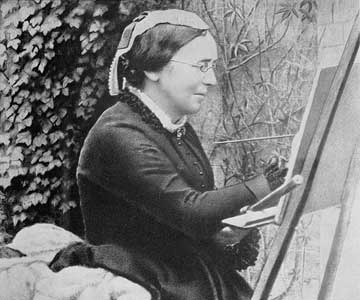
The following 13 years were a real rodeo for Marianne. She traveled to Brazil, Tenerife, Japan, Singapore, Borneo, Sri Lanka, India and South Africa. The year she spent in Brazil was another ascetic experience for her. She isolated herself in a hut deep in the rainforest and produced paintings of the astonishingly magical place.
She returned to London for a brief time in 1878 and exhibited her marvelous collection to the scientific public. Marianne requested a gallery in which her work would be presented to the public, an idea that was accepted by the Royal Botanic Gardens at Kew.
The foundations of the new Marianne North Gallery were placed the same year.
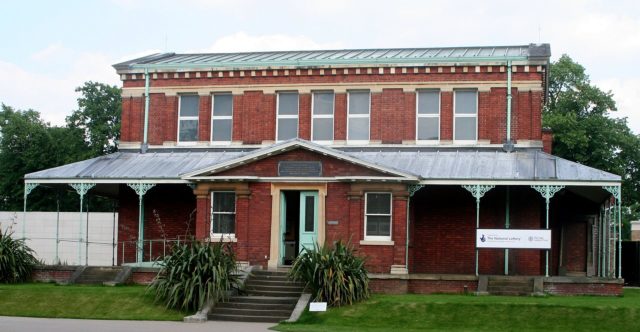
Another interesting chapter was added in her adventure book when Charles Darwin encouraged her to travel to Australia, New Zealand, and Tasmania. Once again, Marianne did a tremendous job at depicting the beauty of those otherworldly places. When she got back from this expedition, she presented her work to Darwin and brought him a gift: an “Australian Sheep” (Raoulia eximia) shrub.
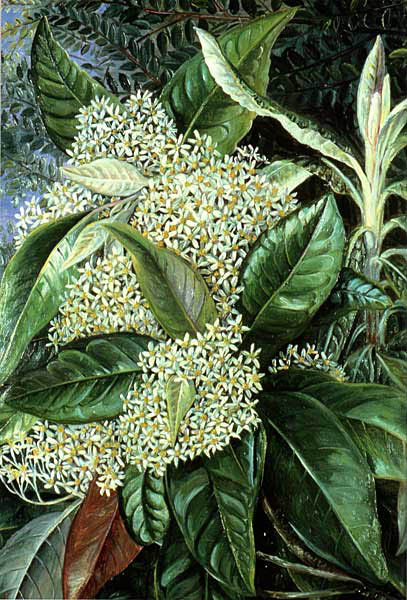
Many more journeys followed in Mariane North’s life, and all of them brought fragments of the plant life that envelopes the world. Marianne’s work was unique in many ways.
First of all, she never picked the plants and always used her oil paints to paint the plants on paper. Her paintings were also unusual and different in style from the classical scientific depictions of plants at the time.
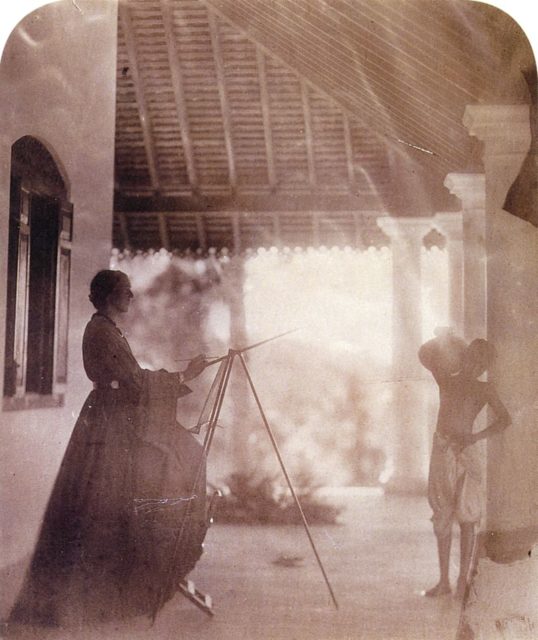
Plants were usually drawn on a white sheet of paper, individually, isolated from their surrounding, but Marianne always tried to capture them together with the ecosystem that surrounded them, showing the harmony of nature.
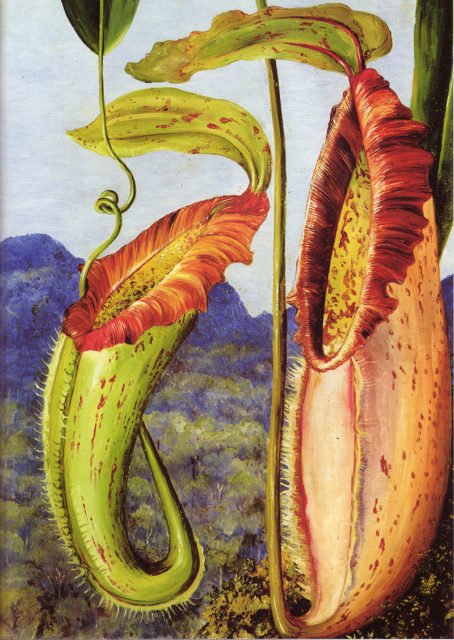
Another thing separated North from other botanists. Instead of watercolors, she used oil paints for her illustrations. They were more resilient to the harsh conditions of the places where she had worked. Also, they lasted longer, which is the reason why they are so well-preserved even today. These qualities made her one of the most important artists of the late Victorian age.
Her gallery at Kew Gardens was opened in 1882 and its walls are still decorated with her life work, giving us a beautiful glimpse of nature through her perspective and brush.
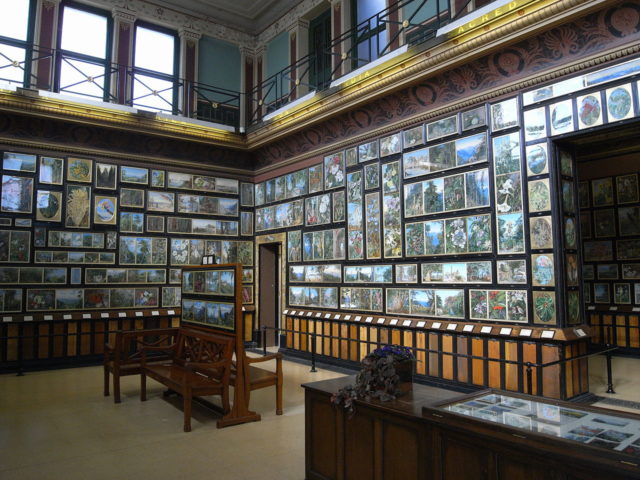
Marianne North’s work is not only artistically significant, it also serves as a monument to some long lost and rare species. Many of the plants she painted almost 100 years ago have become permanently extinct. During her career, Marianne was constantly warning society about the issue of species extinction.
Marianne North died in Alderley, Gloucestershire on 30th August 1890. There is no greater honor for botanists than a plant named after them. Today, there are many species that carry Marianne’s name. Nepenthes Northiana (Miss North’s Pitcher-Plant) is one of them.
